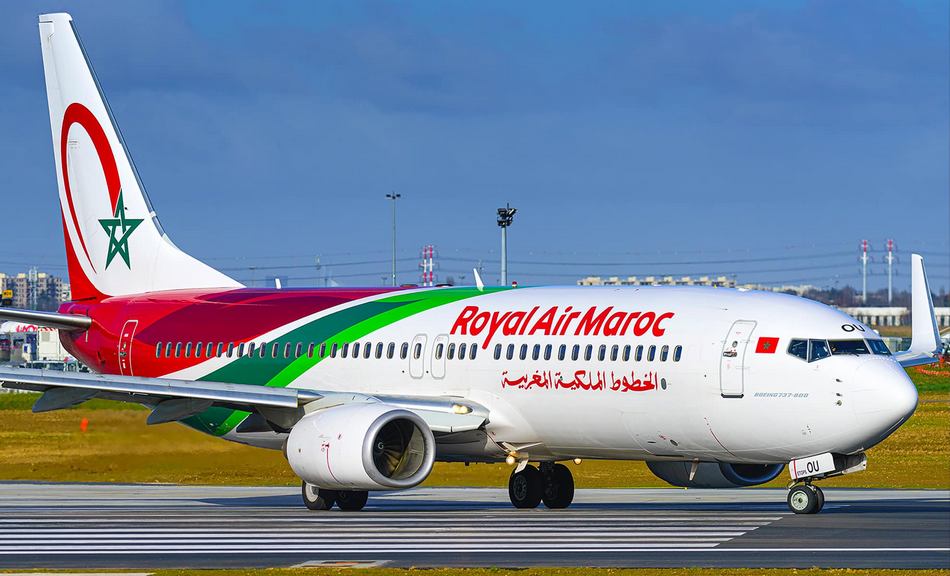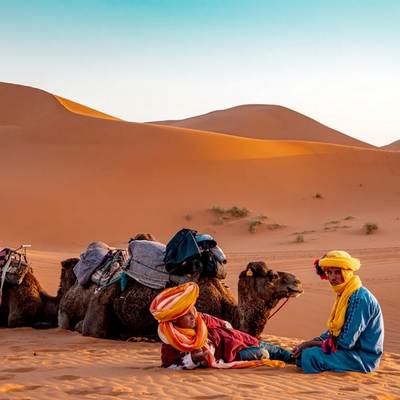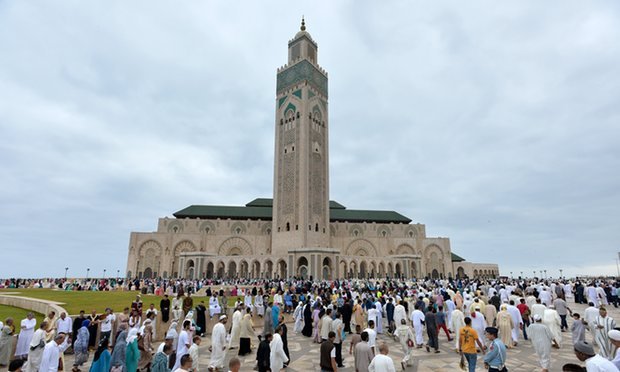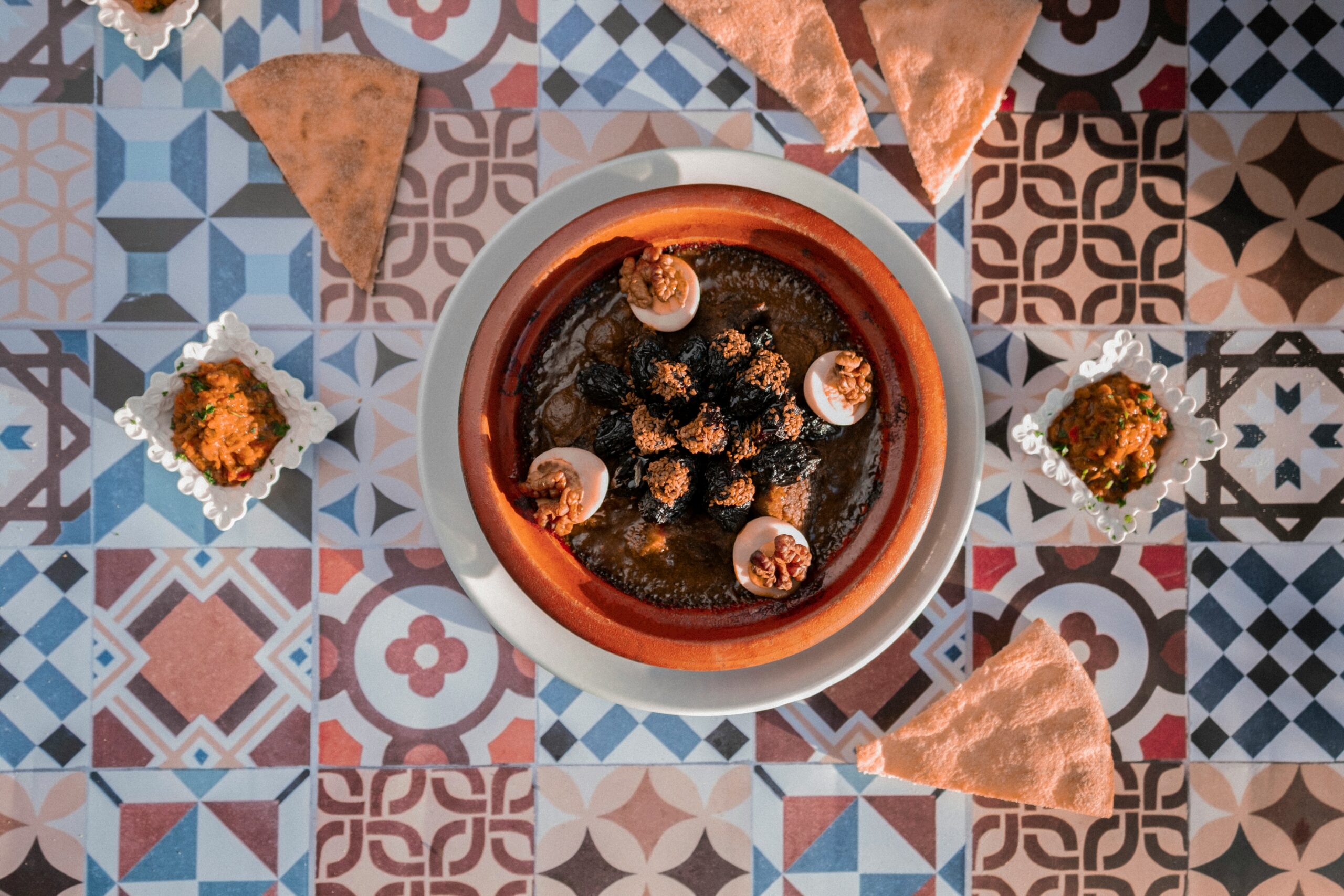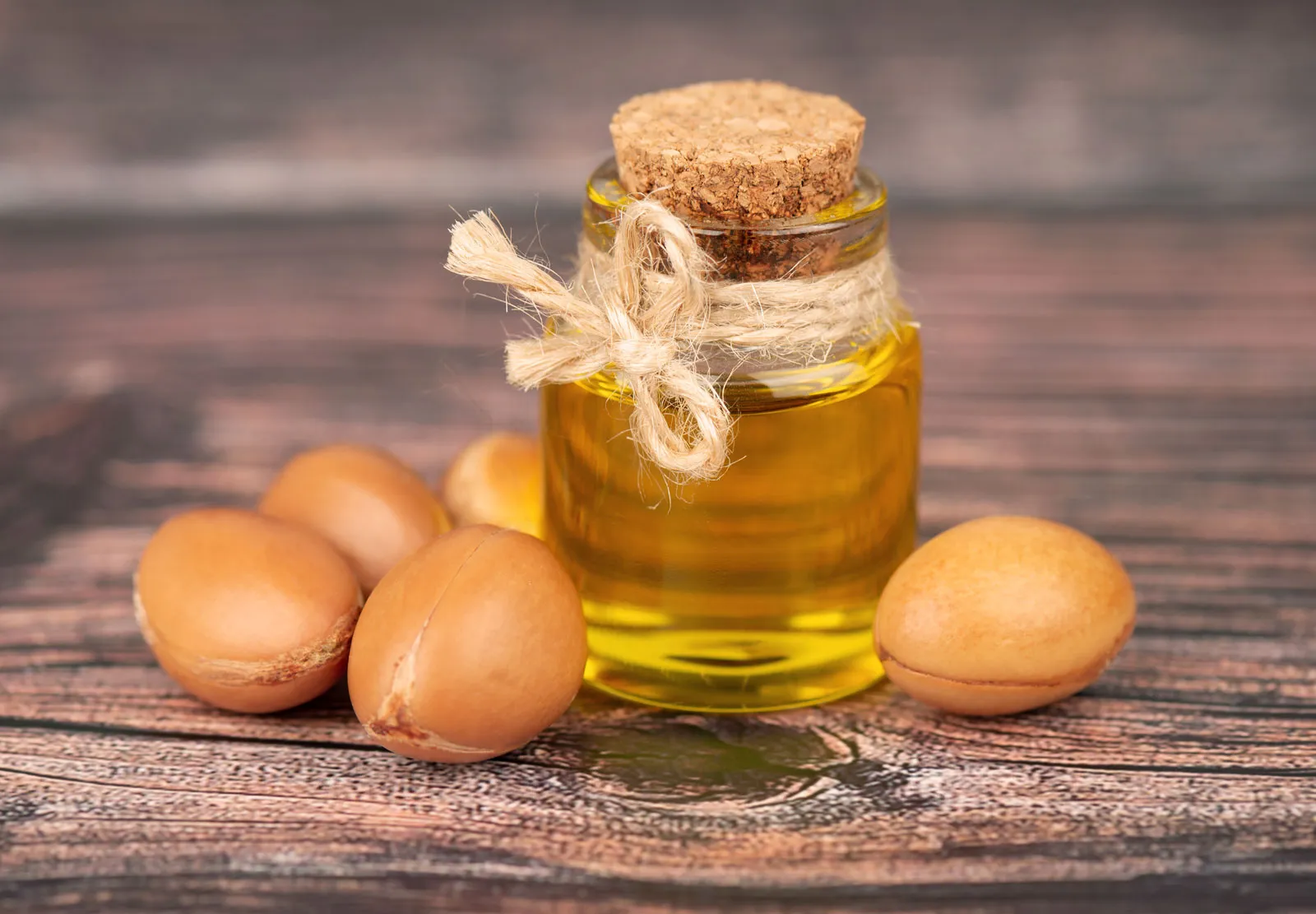Author: Youssef AGHARTI
Royal Air Maroc (RAM) has officially resumed its direct flights between Casablanca and Beijing, marking a significant milestone after a five-year hiatus caused by the COVID-19 pandemic. The first flight landed at Beijing Daxing International Airport at 11:55 a.m. local time, carrying 291 passengers. Shortly after, the return flight departed for Casablanca at 1:55 p.m. with 271 passengers on board. A formal reception was held at Beijing Daxing to commemorate the occasion, attended by Morocco’s Ambassador to China, Abdelkader Ansari, journalists, and various Moroccan and Chinese dignitaries. Adel Khloufi, RAM’s representative in China, highlighted the strategic importance of the route, describing it as more than a practical travel option but a vital link fostering cultural and economic exchanges. “This route strengthens Chinese-Moroccan relations, promoting tourism and bilateral trade while opening a new chapter of friendship and collaboration between the two nations,” Khloufi stated. He also emphasized Morocco’s tourism appeal, spotlighting destinations like Marrakesh and the Sahara Desert, while noting the potential of this direct flight to attract business travelers and boost trade ties. Kong Yue, Vice President of Beijing Daxing International Airport, praised the resumption of the service as a response to the growing interest of Chinese tourists in Morocco, especially following the 2016 visa exemption for Chinese citizens. He stated, “This direct route will stimulate international aviation markets, enhance bilateral exchanges, and strengthen cooperation under the Belt and Road Initiative.” Initially launched in January 2020, the Casablanca-Beijing route was suspended shortly after due to the pandemic. The revived service operates three weekly flights, departing Casablanca on Mondays, Thursdays, and Saturdays at 4:20 p.m. local time, arriving in Beijing the following morning at 11:55 a.m. Return flights leave Beijing on Tuesdays, Fridays, and Sundays at 1:55 p.m., landing in Casablanca at 8:10 p.m. The route is serviced by Boeing 787-9 Dreamliner aircraft, offering 302 seats, including 26 in business class. This resumption aims to invigorate tourism and trade between Morocco and China, paving the way for expanded collaboration and connectivity.
Minister of Tourism, Handicrafts, Fatima Zahra Ammor said desert tourism destinations increasingly attract Moroccan and international visitors. In 2024, the southern regions of Morocco saw 197,000 tourists stay in local accommodations, marking a 12% increase compared to 2023 and a 53% rise from 2019. Overnight stays in these regions reached 494,000, representing a 15% increase from 2023 and a 61% rise from 2019. Desert tourism also benefits from the sector’s road map, which spans from 2023 to 2026. The plan includes several thematic routes focused on deserts and oases, beaches and water sports, cultural circuits, and kasbahs, all designed to attract more visitors to these unique destinations.
As a gateway to Africa and a country of diversity, Morocco boasts scenic mountain ranges, sweeping deserts, and ancient cities with its land area spanning 446,550 km². Casablanca, Morocco’s largest city, is considered the economic and business center of Morocco and is home to the Hassan II Mosque, the second-largest mosque in Africa and the seventh-largest in the world. The population of Morocco is estimated at 36,471,769. Public holidays in Morocco consist of religious and national holidays observed by Moroccans across the country. When are public holidays in Morocco? Dates Holidays Jan 11 Proclamation of Independence Day Mar 31 Eid-al-Fitr May 1 Labor Day Jun 7 Eid-al-Adha Jul 30 Enthronement Jun 27 Fatih Muharram Aug 14 Oued Ed-Dahab Day Aug 20 Revolution Day Aug 21 Youth Day Sep 5 Eid Al Mawlid Nov 6 Green March Day Nov 18 Independence Day Which are the public holidays in Morocco? New Year’s DayNew Year’s Day is a public holiday in Morocco, marking the first day of the new year in the Gregorian calendar and is celebrated worldwide. Proclamation of Independence DayThe Proclamation of Independence Day in Morocco commemorates Morocco’s first proclamation of independence in 1944. Labor DayLabor Day in Morocco is observed in commemoration of the achievements of the labor movement. Eid-al-FitrEid-al-Fitr marks the end of the Holy Month of Ramadan and is celebrated by Muslims in Morocco and around the world. EnthronementThe Enthronement Day is a national holiday in Morocco, marking the King’s accession to the throne on this day in 1999. Eid-al-AdhaEid-al-Adha, also known as the Feast of the Sacrifice, signifies the sacrifice made to God by the Prophet Abraham. Oued Ed-Dahab DayThis holiday commemorates the return of the Oued Eddahab region to Morocco from Mauritania in 1979. Revolution DayAlso known as the King and People’s Revolution Day, the Moroccan Revolution Day commemorates the exile of Sultan Mohammed V on this day in 1953. Youth DayYouth Day is a public holiday in Morocco, celebrated on the reigning King’s birthday, and is in honor of the contribution of the youth to the Kingdom. Fatih MuharramIn Morocco, this day marks the Islamic New Year and the Prophet’s journey from Mecca to Medina in 622 AD. Green March DayThe Green March Day is a national holiday in Morocco and commemorates the 1975 demonstrations over the Province of Sahara. Eid Al MawlidEid Al Mawlid, also known as Milad un Nabi, commemorates the anniversary of the birth of the founder of Islam and the proclaimer of the Qu’ran. Independence DayKnown as Fete de lÍndependence, the Moroccan Independence Day is a national holiday. It commemorates Moroccan independence when King Mohammed returned from exile in 1955.
Moroccan cuisine is renowned worldwide for its delightful blend of unique flavors and ingenious use of aromatic spices. But behind these appetizing dishes lies a rich and fascinating culinary history. For centuries, Moroccan gastronomy has been influenced by various cultures and traditions, creating a unique and diverse cuisine. In this article, we invite you to delve into the history of Moroccan gastronomy and discover the influences that have shaped the iconic dishes we know today. The history of Moroccan cuisine dates back to the pre-Islamic era, when the Berbers, the indigenous inhabitants of Morocco, were the first occupants of the region. Berber cuisine is characterized by the use of local ingredients such as cereals, vegetables, olives, honey, and aromatic herbs. Traditional Berber dishes like couscous and tagine have survived to this day and have become symbols of Moroccan gastronomy. In the 7th century, with the advent of Islam and the Arab Umayyad dynasty, Moroccan cuisine began to enrich itself with new flavors and cooking techniques. Arabs introduced ingredients such as almonds, dates, oranges, and spices, which became essential elements in many Moroccan dishes. Additionally, the influence of Muslim Andalusia brought sophisticated cooking techniques, such as the use of orange blossom water and honey to flavor desserts. The presence of the Jewish community in Morocco dates back to antiquity, and their influence on Moroccan gastronomy is significant. Sephardic Jews brought with them unique recipes, including dishes made with spices, minced meat, and stuffed vegetables. Famous examples include spicy meatballs called “kefta” and “pastillas,” flaky pastries filled with chicken or seafood. Jewish flavors harmoniously merged with other culinary influences in Morocco. During periods of colonization, Morocco was influenced by European empires, particularly the Portuguese and French. The Portuguese introduced ingredients such as peppers, tomatoes, and potatoes, enriching Moroccan cuisine. The French also left their mark, especially through French cuisine influence. French cooking techniques, such as pastry-making and the use of savory sauces, were adopted and adapted by Moroccan chefs. Thus, dishes like “Bastilla,” a delicious pigeon and almond pie, emerged from this culinary fusion. One of the most distinctive features of Moroccan gastronomy is its generous use of aromatic spices. Spices such as cumin, turmeric, ginger, paprika, cinnamon, and saffron give Moroccan dishes their characteristic flavors and vibrant colors. The importance of spices in Moroccan cuisine can be attributed to Morocco’s geographic location as a trade crossroads, where spices have been exchanged for centuries. In conclusion: Moroccan gastronomy is a true culinary treasure, the result of a rich history and multiple influences. From Berber traditions to Arab, Andalusian, Jewish, and European influences, Moroccan cuisine is a harmonious blend of flavors, ingredients, and cooking techniques. Whether it’s couscous, tagine, pastillas, or delicious desserts made with honey and dried fruits, each Moroccan dish tells a unique story. By exploring the history of Moroccan gastronomy, we gain a better understanding of the significance of cuisine as a cultural expression and can savor these culinary delights with deeper appreciation.
Argan oil truly lives up to its nickname “gold of Morocco” as it is both precious and wonderfully beneficial. This unique oil is derived from the pressing of the fruit of the argan tree, a rare tree that only grows in the southwest of Morocco. For generations, the oil has been consumed with bread or in couscous. It is also used as a cosmetic product on the skin and hair for its restorative and strengthening properties. What is the fruit of the argan tree called ? The fruit of the argan tree, called “affiache,” is a false drupe that is yellow in color: a fleshy, spindle-shaped fruit similar to a nut. It turns brown as it dries and measures about 3 cm in length. Its small spine at the top falls off during maturation, which occurs between April-May and September-October. Its very hard nut contains 2-3 kernels that will be pressed to extract the famous argan oil. Well-being benefits The argan tree is used to prevent skin aging, relieve dry and very dry skin, regulate cholesterol, and alleviate joint pain. Highly valued by mature skin, the argan tree contains omega-9 and omega-6. The former contribute to the elasticity, hydration, nutrition, and youthfulness of the skin. The latter promote the suppleness and firmness of the skin to prevent skin aging. Argan oil is also a great ally for hair. It helps nourish hair, prevent hair loss, and maintain its shine. Finally, research on argan oil has shown that it may have beneficial effects in preventing cardiovascular diseases due to its nutritional qualities. Uses Argan oil can be used : Additional Tips In Cooking Argan oil is the only food-grade derivative of the argan tree. Rich in antioxidants, argan oil stabilizes hypercholesterolemia, stimulates brain cells, and promotes good liver function. It contains twice as much vitamin E as olive oil. With its light hazelnut and almond aroma, it enhances fish, couscous, tagines, salads, or dressings. However, this oil is consumed raw as it does not tolerate cooking.
Souk El Had is considered the largest urban market in Africa. It spans over 13 hectares and houses nearly 3000 shops. From a distance, it resembles a fortress with its 6-meter high walls, pierced by 13 large gates. Inside, the market square is divided into several distinct wings, among which you can find the vegetable and fruit market. Due to its central location, the market is accessible from all parts of the city. You can reach it by car, taxi (both large and small), bus, and even on foot. Note that it is closed on Mondays for weekly cleaning. Souk El Had successfully combines modernity with tradition. The area has been renovated while retaining its Amazigh charm, replacing tents with shops and commercial tiles. Nevertheless, the atmosphere remains authentically vibrant, and the shopping experience has become much more pleasant.

